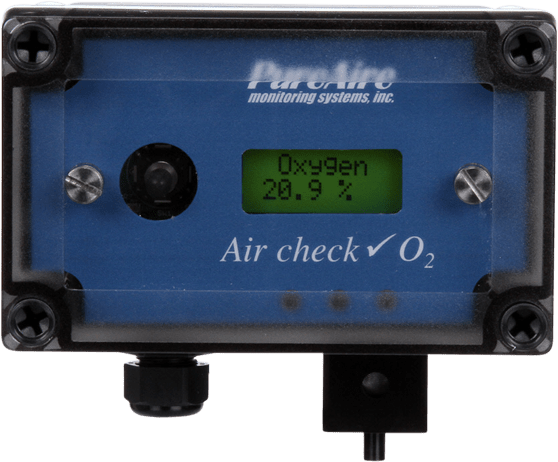Biotechnology

Within the biotechnology field, oxygen monitors play an important role in protecting the public safety by reducing the risk of adverse health effects after a gas leak. Nitrogen gas is commonly used in biotechnology, as it is widely available, cost-effective, and easy to use. Other gases commonly used are argon and CO2.
In the medical field, nitrogen and inert gases help to chill tissue to prolong its vitality. Fertility treatments have become highly popular in recent years, as more women are delaying childbirth. The rise in fertility clinics has led to an increase in egg freezing, IVF, and other biotechnologies that rely on liquid nitrogen to keep eggs stored safely. Using nitrogen to chill the eggs reduces the development of ice crystals, which can affect the vitality of stored eggs.
Along with the increased use of nitrogen in fertility clinics, cryotherapy clinics and medical providers have also come to rely on nitrogen for its chilling properties. For instance, cryotherapy may be an effective cancer therapy; it also reduces inflammation and swelling in injured tissue. Cryotherapy was originally made popular among sports medicine providers, but has been growing in the consumer market, as more people seek natural methods to manage pain.
In a cryotherapy chamber, the body is exposed to temperatures of -240 Fahrenheit. Athletes who spend a couple of minutes inside the cryotherapy chamber can experience reduced muscle soreness and faster healing from injury. The cold air decreases inflammation and swelling, thus helping injuries to heal faster, but without the discomfort that might come with sitting in an ice bath. The treatment shows promise for reducing muscular pain from arthritis, multiple sclerosis, restless leg syndrome, and other chronic conditions.
Whether in the fertility clinic, cryotherapy chamber, or elsewhere, the nitrogen that’s used to chill the air can pose a health hazard if a leak develops. If nitrogen leaks, it displaces oxygen, which results in air that’s deficient in O2. As patients and staff breathe oxygen deficient air, they face risk of adverse health effects. Nitrogen is naturally denser than air, and it will displace oxygen from the environment. In a low oxygen environment, workers can experience respiratory problems, cognitive confusion, and, in the worst case scenario, death via asphyxiation.
The oxygen monitor is a simple yet effective way to reduce risks in the laboratory or IVF clinic setting while providing patients with access to the latest treatments for fertility, pain control, and more. In some settings, the monitor may be required to comply with existing regulations.
Since nitrogen gas lacks odor and color, there is no way clinic workers would be able to spot a leak on their own. Thus, it’s important to install an oxygen monitor anywhere nitrogen is used or stored. The monitor detects ambient levels of oxygen and remains silent as long as there’s enough oxygen in the air. If levels start to fall to the threshold set by OSHA, an alarm will go off to warn employees that oxygen levels are falling. Since the oxygen monitor detects leaks before oxygen levels fall to dangerous levels, staff and patients have enough time to evacuate and can avoid serious health risks.
PureAire’s oxygen monitors are built with long lasting zirconium sensors, which are capable of operating reliably in confined spaces, including basements and freezers. Oxygen deficiency monitors from PureAire work in temperatures from 55 Celsius to -40 Celsius and are not affected by barometric drift. Once these sensors are set up, they will perform reliably with no maintenance or calibration. PureAire’s oxygen monitors ship with a 3 year warranty, and come with UL, C UL, and CE approvals. Protect your facility today with a best in class oxygen monitor from PureAire. Browse O2 monitors today.


